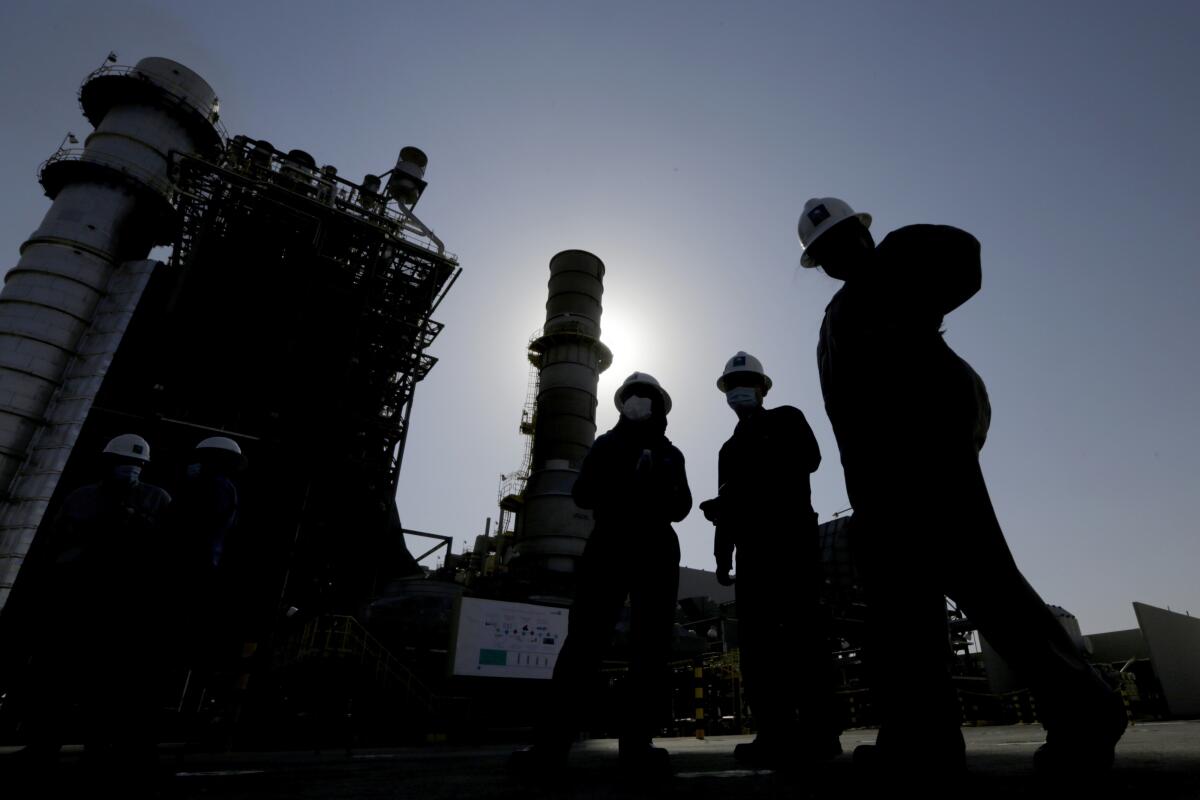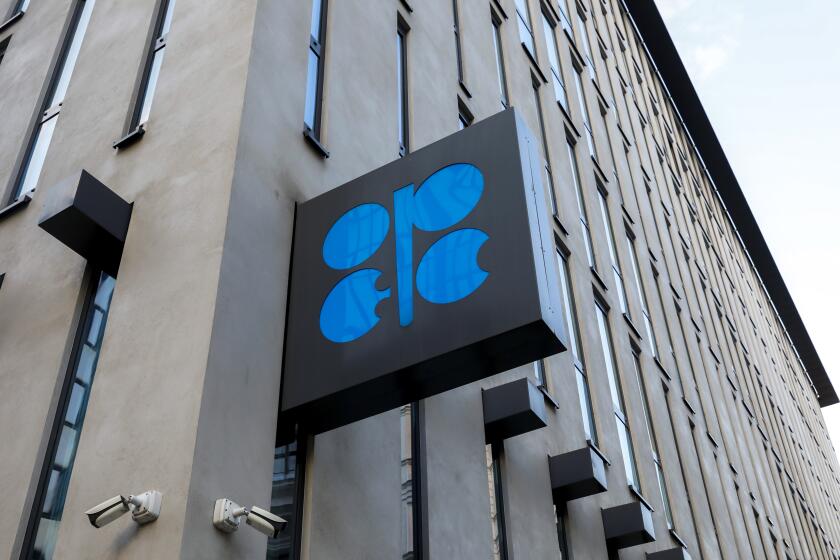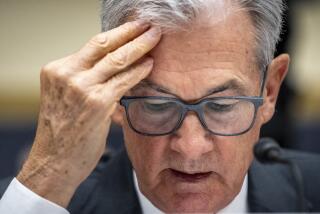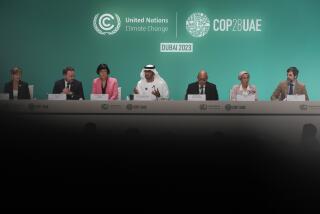OPEC+ makes shock million-barrel cut in new inflation risk

- Share via
OPEC+ announced a surprise oil production cut of more than 1 million barrels a day, abandoning previous assurances that it would hold supply steady and posing a new risk for the global economy.
It’s a significant reduction for a market where — despite the recent price fluctuations — supply was looking tight for the latter part of the year. Oil futures weren’t trading when the cut was announced on Sunday, but the inevitable price reaction could add to inflationary pressures across the world, forcing central banks to keep interest rates higher for longer and crimping economic growth.
Saudi Arabia led the cartel by pledging its own 500,000-barrel-a-day supply reduction. Fellow members including Kuwait, the United Arab Emirates and Algeria followed suit, while Russia said the production cut it was implementing from March to June would continue until the end of the 2023.
“OPEC+ clearly want a higher price,” said Gary Ross, a veteran oil consultant turned hedge fund manager at Black Gold Investors LLC. The group “is following through on being proactive and ahead of the curve, and is trying to rip oil prices from the grip of” macro sentiment.
The surprise move could once again flare tensions between the U.S. and Saudi Arabia, a regional partner whose relationship with President Biden’s administration has been tense. The White House said that the new cuts were ill-advised.
The initial impact of the cuts, starting next month, will add up to about 1.1 million barrels a day. From July, due to the extension of Russia’s supply reduction, there will be about 1.6 million barrels a day less crude on the market than previously expected. Russia initially moved to cut production in March, in retaliation against Western sanctions prompted by its invasion of Ukraine.
OPEC did not change its targets for shipping oil amid Russian sanctions that could take significant amounts of oil off the market.
Riyadh said on Sunday the cuts were a “precautionary measure aimed at supporting the stability of the oil market.”
Relations between Saudia Arabia and the U.S. have been fraught since last year, when the White House’s efforts to cajole the kingdom into pumping more oil fell flat.
Biden made a controversial trip to the region last July, but came away without any commitments on production. Then in October, when OPEC+ made a surprise cut of about 2 million barrels day just weeks before the U.S. midterm elections, Biden vowed there would be “consequences” for Saudi Arabia, but the administration did not follow through.
On Sunday, the White House said the OPEC+ decision to cut oil production was wasn’t advisable under current market conditions. The Biden administration also said the US will work with producers and consumers with a focus on gasoline prices for Americans.
Oil stabilized
The move on Sunday — announced a day before the OPEC+ monitoring committee is due to meet — was an unprecedented way to decide policy for the group, which has had to adapt in recent years first to the demand shock of the pandemic and now to the war in Ukraine and the fallout of sanctions.
An explosion tore through a cafe in St. Petersburg, killing a military blogger who had supported the war in Ukraine.
As recently as Friday, delegates had been indicating privately that there was no intention to change their production limits.
Oil fell to a 15-month low last month due to the turmoil caused by the banking crisis, but prices had recovered as the situation showed signs of stabilizing. Brent crude, the international benchmark, closed just below $80 a barrel on Friday, up 14% from its March trough.
But that may not be high enough for the group. Back in October, the last time it made a massive cut that took consumers aback, Nigerian Minister of State for Petroleum Resources Timipre Sylva said the group “wants prices around $90.”
For its part, Saudi Arabia is embarking on a huge batch of spending, running into trillions of dollars, to transform its economy into a tourism hot spot and global logistics and business hub. While much of that spending is driven by a few sovereign wealth funds that may not directly benefit from higher crude prices, government officials have said they will use surpluses to help accelerate domestic investments.
The actual reduction in supply may be smaller than the advertised volumes of around 1.6 million barrels a day, assuming that OPEC+ sticks with current reference levels for the cuts. Most OPEC+ members, including Iraq and Kazakhstan, are already producing significantly below their present quotas as they contend with under-investment and operational disruptions, and so may not need to make further curbs.
Still, the move will have surprised the market. All fourteen traders and analysts polled last week by Bloomberg predicted no change. They were taking their lead from Saudi Energy Minister Prince Abdulaziz bin Salman, who had said last month that the current OPEC+ production targets are “here to stay for the rest of the year, period.”
From time to time, the prince has delighted in wrong-footing speculators with unexpected supply changes. During one such intervention he warned that short-sellers would be “ouching like hell,” and for crude bears this latest move may be similarly painful.
More to Read
Inside the business of entertainment
The Wide Shot brings you news, analysis and insights on everything from streaming wars to production — and what it all means for the future.
You may occasionally receive promotional content from the Los Angeles Times.












